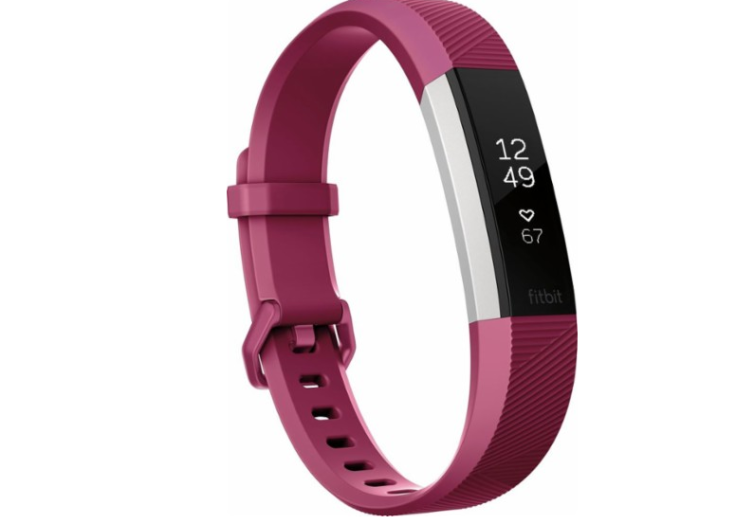How Apple And FitBit Wearables Could Save Lives

This article originally appeared on the Motley Fool.
Leveraging data to transform healthcare is only in its infancy, but we're already seeing examples of how wearable technology may help patients. For example, Fitbit (NYSE:FIT) and Apple (NASDAQ:AAPL) sell consumer-electronics devices that measure and report health information, such as activity levels and heart rate, so that people can track the progress they're making toward their health goals, such as weight loss. Soon, data that these wearable devices collect could become even more useful as more sophisticated sensors are incorporated into them.
Advantages of real-time tracking
In the past, doctors and patients have relied upon point-in-time measurement to inform healthcare decisions. For instance, diabetics would evaluate their blood-sugar levels with finger sticks at different times of day.
Point-in-time measurement, however, provides limited insight into patient health, and as a result, healthcare is moving increasingly toward monitoring conditions, including blood sugar, in real time.
Already, companies such as Dexcom market small sensors that patients can wear to continuously track their blood glucose levels. These sensors collect data and report it to patients through external devices, or via apps on consumer electronic devices.
At Medtronic (NYSE:MDT), one of the country's largest medical-device companies, these sensors are even attached to an insulin pump patients wear that can automatically administer insulin as it's needed.
Soon, the information that doctors and patients can collect from wearable technology may become even more useful.
Last year, Fitbit CEO James Park promised to bump up spending to develop medical applications for his wearables, proclaiming that his company's devices could one day "save your life."
In December, Fitbit announced that it's working with Medtronic to merge activity data its devices collect with blood glucose data Medtronic's blood glucose monitors collect in one app. The iPro2 myLog mobile app eliminates the need for patients with type 2 diabetes to manually track activity data, and it offers better insight into how exercise affects their glucose levels. It also provides an algorithm-based, one-page report that can help doctors quickly identify and address key problem areas with patients.
Fitbit's not alone in thinking that the marriage of wearables with healthcare is inevitable.
Recently, Apple CEO Tim Cook made news when he told students in Scotland that he's been wearing a custom Apple Watch that's helping him track the impact of exercise and diet on his blood glucose levels. Unlike existing sensors that require insertion under the skin, Apple's technology collects blood-sugar data by using non-invasive optical sensors that measure blood sugar using light.
There's no time table for commercializing Apple's new blood glucose monitor, but rumors are its been working on the technology for years, and it's evaluating regulatory options to determine how to launch the product with the Food and Drug Administration's blessing. In the future, optical sensors included in the Apple Watch might help patients with other conditions, too. Apple's founder, Steve Jobs, believed they can be used to track important vitals, including oxygen levels.
Across the medical-device industry, researchers are considering how wearables may help monitor kidney function in chronic kidney disease and seizures in epilepsy patients. Wearables, such as Medtronic's bandage-sized Seeq, are being used to monitor and report cardiac activity heart disease patients, too.
Health sensors are also being incorporated into clothing. Recently, Medtronic won FDA approval for a vest that patients can wear that maps their cardiovascular systems, providing greater insight into the cause of arrhythmia than cardiac mapping via catheterization.
Companies like Athos market compression shirts, pants, and shorts that include sensors to track muscle activity to improve athletic performance.
And companies are finding innovative ways to use Alphabet's (NASDAQ:GOOGL) (NASDAQ:GOOG) Google Glass in healthcare to boost productivity. For example, doctors who wear Google Glass can sign up with Augmedix to have their scribes update patient electronic health records in real time, freeing them up to see more patients per day. Doctors can also use Google Glass to view patient records, without turning away to use a computer.
Overcoming challenges
Wearable technologies are helping patients live healthier lives, and it appears that they're going to play an increasingly larger healthcare role in the future. Gaining widespread adoption of these products will require companies to overcome concerns regarding accuracy, privacy, and patient adherence. If Fitbit, Apple, and others can address those concerns, the market opportunity for them in healthcare could be huge.
Suzanne Frey, an executive at Alphabet, is a member of The Motley Fool's board of directors. Todd Campbell owns shares of Apple. His clients may have positions in the companies mentioned.The Motley Fool owns shares of and recommends Alphabet (A shares), Alphabet (C shares), Apple, and Fitbit. The Motley Fool owns shares of Medtronic. The Motley Fool has a disclosure policy.





















